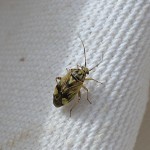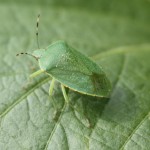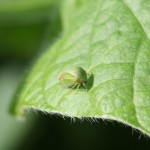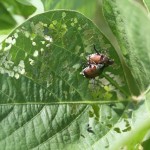
Tarnished plant bugs in cotton: This is number one with many reports of treatment, but not blowout populations, primarily in cotton once in gets 8-10 total nodes. I’ve discussed thresholds and treatment options in a couple of recent articles (linked below).
Cotton Moves Forward (June 26, 2013)
Preparing for Plant Bugs (June 20, 2013)
Japanese beetles in soybean: Although rarely a serious threat, high populations can potentially cause enough defoliation in soybean to justify treatment. Treatment prior to flowering would be recommended if defoliation reaches or exceeds 30-35%. Decrease this threshold to 20-25% defoliation for soybeans between R1-R6. Be sure to judge the entire canopy and not just the top leaves. The synthetic pyrethroids work well and are most commonly used for control. A complete list of recommended insecticides and rates in linked below. In my experience, it often takes 1 or more beetles per sweep to cause the above levels of defoliation. So don’t freak out if you are catching a few!
Soybean Insecticide Recommendations for Soybean

Stink bugs in soybean: There has been a call or two about adult green stink bugs in our earliest soybean fields. None of these reports are of threshold infestations. The recommended threshold is 9 or more bugs/25 sweeps. However, early in the season, stink bugs will often concentrate in the earliest maturing fields. They are looking for pods. Be sure to run your sweep net through any fields that qualify, and remember, they are essentially a non-pest until pods are present. As with Japanese beetles, the synthetic pyrethroids are the materials of choice for green stink bugs.

Threecornered alfalfa hopper in soybeans: This is one to watch out for in seedling soybeans. I recorded a short update on this pest in a separate post (link here).


